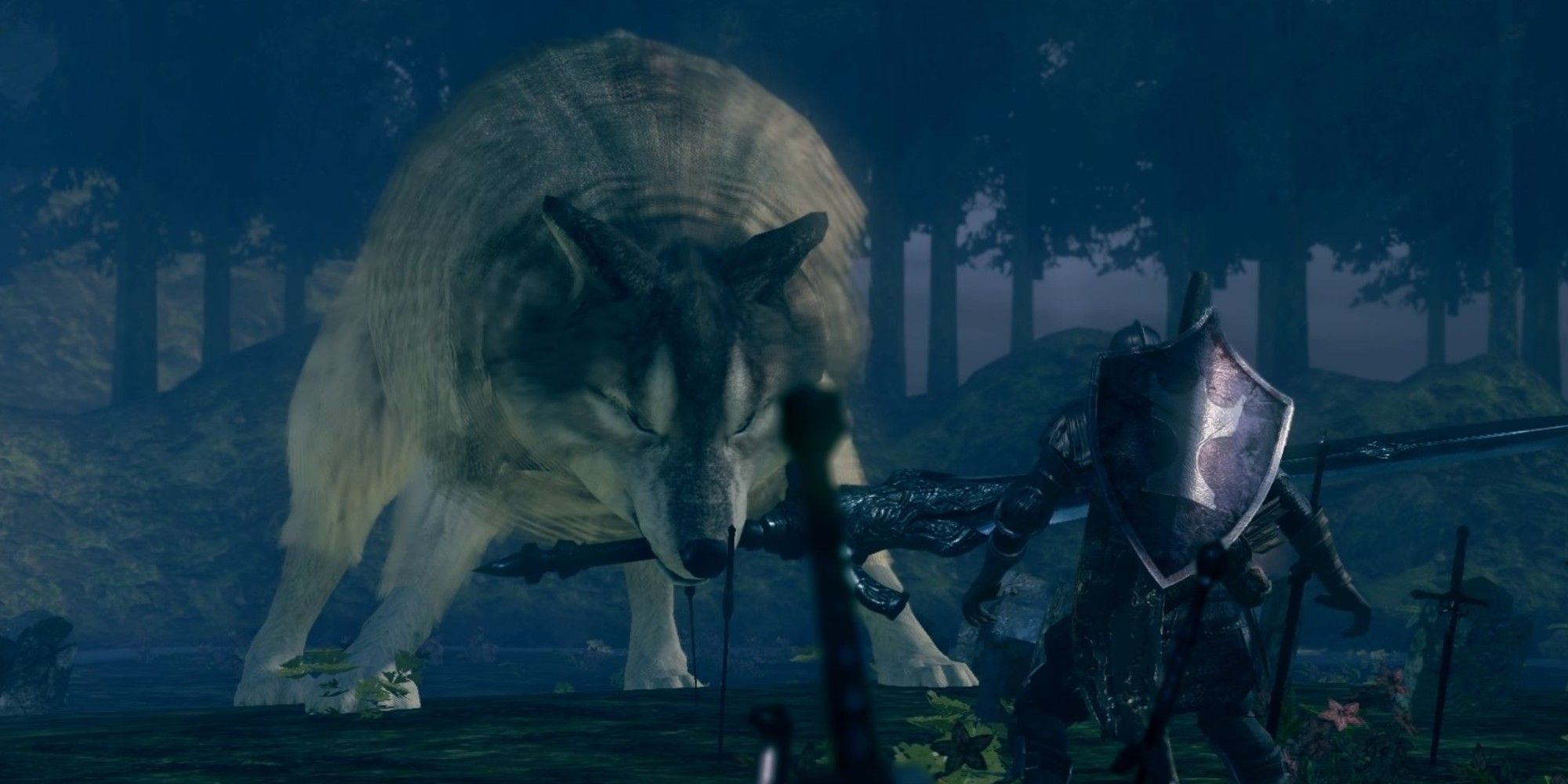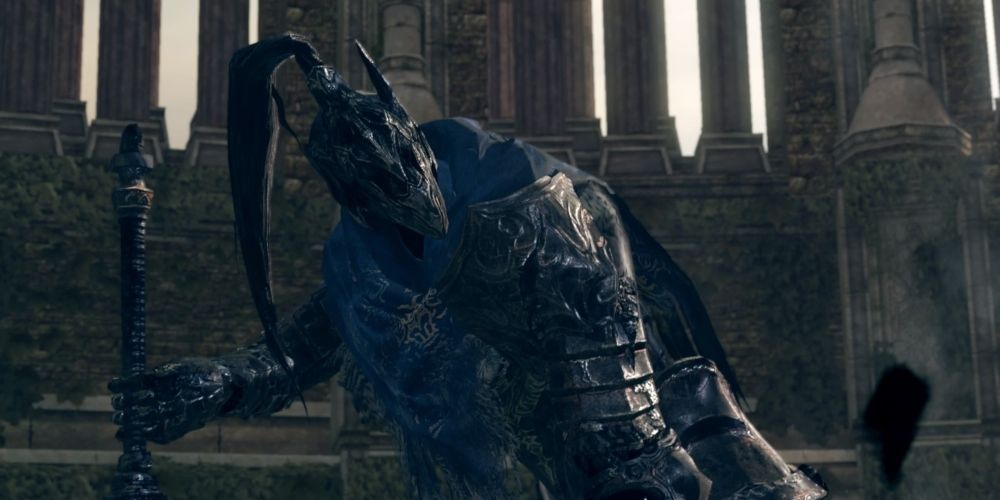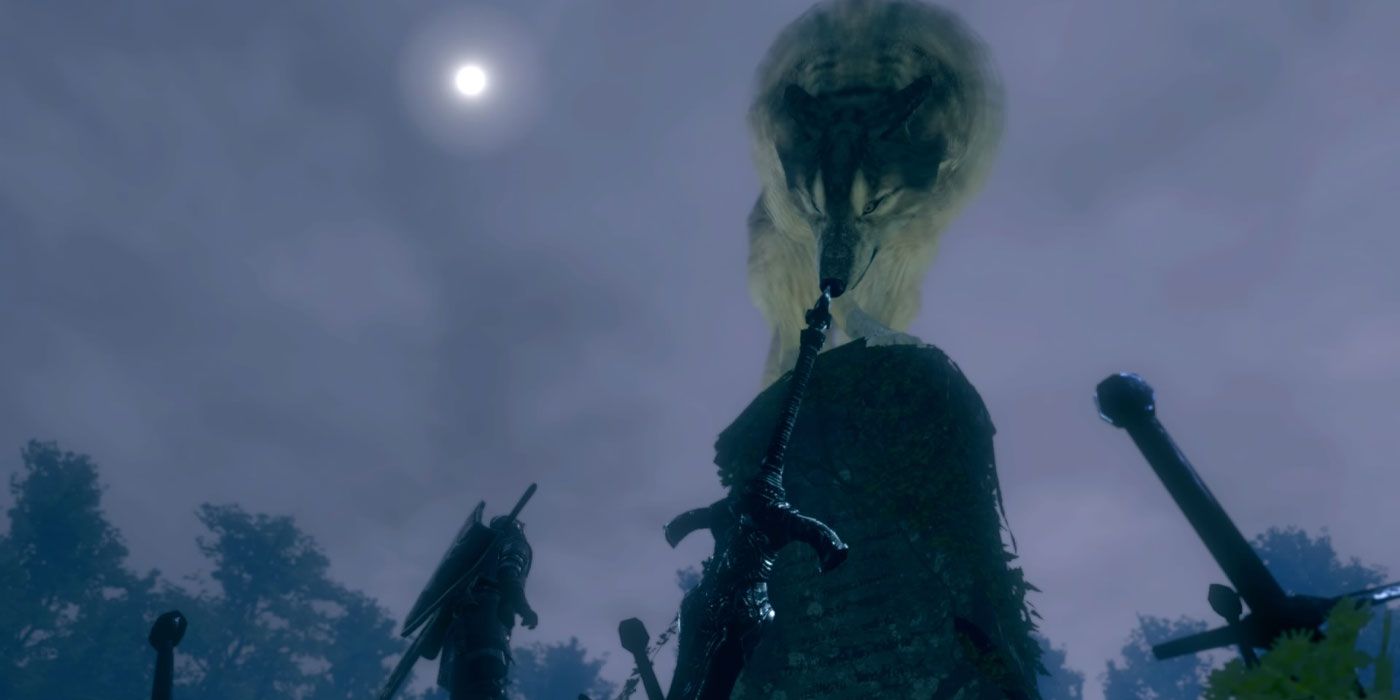Summary
- The boss fight against Sif in Dark Souls is heart-wrenching, with players realizing that Sif is fighting not out of anger but to protect his master's resting place.
- Sif's fighting style and the melancholy music make players question the morality of killing this wounded animal, adding to the tragedy of the boss fight.
- The backstory of Artorias and his sacrifice, combined with the player's role in the DLC, adds a layer of sadness and complexity to the fight, making it one of Dark Souls' greatest achievements.
Fans of the Dark Souls series are well aware of the tragic stories in FromSoftware's games — a sentiment that extends to other FromSoft titles like Bloodborne and Sekiro. Hidden behind obscure storytelling, ominous and vague dialogue, and item descriptions lie many tales that tell of heroes rising to confront great battles and, unfortunately, meeting terrible ends. The Nameless King, Solaire of Astora, and Anastacia of Astora are all characters that players can encounter whose stories culminate in heartbreaking ways. Perhaps the most forlorn charactesr in the Souls series are is Artorias the Abysswalker and his wolf, Sif.
Players don't actually encounter Artorias in the base Dark Souls campaign, but his heroics and exploits are mentioned numerous times by NPCs, as well as contained in several item descriptions. Artorias doesn't appear until the DLC "Artorias of the Abyss" as one of the best bosses in the game. That said, Artorias' faithful companion Sif shows up in the base game's second half as a boss guarding his former master's resting place. Everything from the lore to the fight itself breaks players' hearts, and it may be one of the saddest boss fights in gaming.
Fighting Sif Is Heartbreaking In and of Itself
The battle against Sif turns sour the moment that players enter the arena. Some could argue that simply having to kill a dog in a boss fight is already dreadful, but the actual battle drills in the tragedy even more. The simple fact that Sif is still guarding the Artorias' tomb all these years later is heartbreaking – almost like the dark fantasy version of Futurama's famous episode "Jurassic Bark." Sif is massive and intimidating, but players get the sense that he isn't fighting because he's angry. The dog is simply fighting to protect his master's resting place and, depending on how the lore is interpreted, to protect others from Artorias' fate. The fight is certainly intense, and is made even more so by Sif's fighting style.
Sif fights using the same moves that Artorias used when they fought together. The music is intentionally quiet and melancholy to make the player reflect on the act they're committing and question the morality of slaying this wolf. The battle's last stretch is the most heartbreaking. Sif starts limping their health is low enough and his movements become slower – he'll even fall over after using certain attacks. Having to watch this wounded animal desperately try to defend his master is enough to bring a tear to even the more chaotic player. Dark Souls' lore makes the boss fight that much more tragic.
Artorias' DLC and Lore Make the Fight Even More Depressing
To summarize Artorias' backstory, he was a legendary knight of Gwyn who was the most equipped to fight off the Abyss. His weapons, skills, ability to abysswalk, and faithful companion Sif made him the perfect choice to go into the Abyss to slay Manus and rescue Princess Dusk. Unfortunately, Artorias would die during this mission, and with the last of his strength, he used his great shield to save Sif. That's enough to make the encounter with Sif incredibly somber, but that isn't the whole story, and Artorias' fate is even more bleak.
Depending on how the player's role is interpreted in DLC, it may have actually been the player who defeated Manus and rescued Princess Dusk rather than Artorias. While Artorias' legend may tell that he heroically sacrificed himself to defeat Manus and save the princess, in actuality, he perished before he could achieve either feat. In the fight with Sif, players can set the wolf free to help in the battle against Manus. Not only does this further endear Sif to the player and make the boss fight that much more heart-wrenching, it actually changes how the battle begins. If players have summoned Sif in the DLC and then enter Sif's boss fight, Sif will remember the player's scent. Instead of instantly grabbing the sword and preparing for battle, Sif will sniff the player, whimper, and slowly go towards Artorias' sword.
Sif's Misfortune Still Breaks Hearts Years Later
After playing Artorias' DLC, fans get to look at this haunting fight from a new perspective. Players don't encounter a fearsome guardian they have to defeat in battle, but rather an old friend and companion from another time. Sif is duty-bound to protect his master's grave and prevent anyone from acquiring Artorias' Covenant, so he can prevent others from befalling the same fate as his master. Conversely, the player must gain the Covenant of Artorias in order to defeat the Four Kings. Slaying this dog who is protecting his master's resting place forces the player to question if their quest is really for the best of the world, and if the player is right to continue on that path.
The boss fight against Great Grey Wolf Sif is still one of Dark Souls' greatest achievements thanks to the layers of depth and complexity at play in the backstory alone. While many players will miss much of the lore if they aren't astutely hunting for it, subsequent playthroughs or deep investigation will peel back the layers of Sif and Artorias' tragic tale. Sif's layered narrative cements FromSoftware as one of gaming's best storytellers and stands out as one of the absolute best battles in gaming history.




